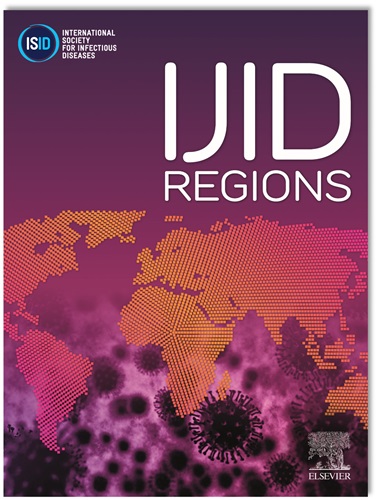Infective endocarditis and cardiac events after transcatheter vs surgical aortic valve replacement: A nationwide cohort study
IF 4.3
2区 医学
Q1 INFECTIOUS DISEASES
引用次数: 0
Abstract
Objectives
To compare rates of infective endocarditis (IE) and major adverse cardiac events (MACE) in patients with TAVI, bioprosthetic (bio), and mechanical (mech) SAVR.
Methods
Population-based cohort study of inpatient adults undergoing TAVI, bioSAVR or mechSAVR for aortic valve stenosis between 2012 and 2021 in Switzerland. In 2 pairwise 1:1 propensity-score matched cohorts (TAVI versus bioSAVR and bioSAVR versus mechSAVR) we analysed the primary outcome of the incidence of IE and secondary outcomes including MACE.
Results
Among 18,253 patients undergoing aortic valve replacement (mean age 76.6±10.3 years, 43.8% female), the incidence rate (IR) of IE was highest in the first 3 months after the intervention (TAVI, bioSAVR, mechSAVR: 23.61, 18.87, 16.65 per 1000 person-years, respectively). After matching, the rate of IE was higher in patients undergoing TAVI versus bioSAVR (n=2329 pairs, HR 1.56 [95% CI, 1.12-2.18]; incidence rate difference [IRD] 3.84 [95% CI,1.29-6.39] per 1000 person-years), and higher in bioSAVR versus mechSAVR (n=773, HR 2.27 [1.24-4.15]; IRD 4.57 [1.29-7.85] per 1000 person-years). The HRs for MACE were 2.10 [1.90-2.33] and 2.09 [1.58-2.77], respectively.
Conclusions
For patients undergoing aortic valve replacement for native aortic valve stenosis, TAVI was associated with higher rates of IE than bioSAVR, as was bioSAVR when compared with mechSAVR.
经导管与外科主动脉瓣置换术后感染性心内膜炎和心脏事件——一项全国性队列研究。
目的:比较TAVI、生物假体(bio)和机械(mech) SAVR患者感染性心内膜炎(IE)和主要心脏不良事件(MACE)的发生率。方法:以人群为基础的队列研究,对2012年至2021年间在瑞士接受TAVI、bioSAVR或mechSAVR治疗主动脉瓣狭窄的住院成年人进行研究。在两个一对一的倾向评分匹配队列(TAVI与bioSAVR和bioSAVR与mechSAVR)中,我们分析了IE发生率的主要结局和次要结局,包括MACE。结果:18253例主动脉瓣置换术患者(平均年龄76.6±10.3岁,女性43.8%)中,IE的发病率(IR)在干预后的前3个月最高(TAVI、bioSAVR、mechSAVR分别为23.61、18.87、16.65 / 1000人年)。配对后,TAVI患者的IE发生率高于bioSAVR (n=2,329对,HR 1.56 [95% CI, 1.12-2.18];每1000人年的发病率差异[IRD] 3.84 [95% CI,1.29-6.39]), bioSAVR与mechSAVR的发病率差异更高(n=773, HR 2.27 [1.24-4.15];IRD 4.57[1.29-7.85] / 1,000人年)。MACE的hr分别为2.10[1.90-2.33]和2.09[1.58-2.77]。结论:对于因原生主动脉瓣狭窄而接受主动脉瓣置换术的患者,TAVI与IE的发生率高于bioSAVR, bioSAVR与mechSAVR的发生率也较高。
本文章由计算机程序翻译,如有差异,请以英文原文为准。
求助全文
约1分钟内获得全文
求助全文
来源期刊
CiteScore
18.90
自引率
2.40%
发文量
1020
审稿时长
30 days
期刊介绍:
International Journal of Infectious Diseases (IJID)
Publisher: International Society for Infectious Diseases
Publication Frequency: Monthly
Type: Peer-reviewed, Open Access
Scope:
Publishes original clinical and laboratory-based research.
Reports clinical trials, reviews, and some case reports.
Focuses on epidemiology, clinical diagnosis, treatment, and control of infectious diseases.
Emphasizes diseases common in under-resourced countries.

 求助内容:
求助内容: 应助结果提醒方式:
应助结果提醒方式:


